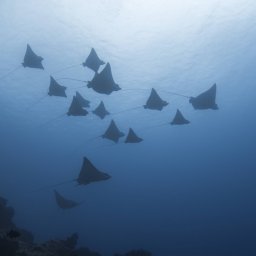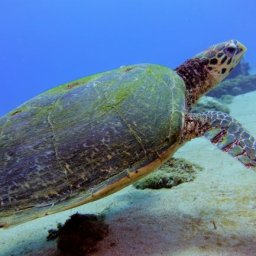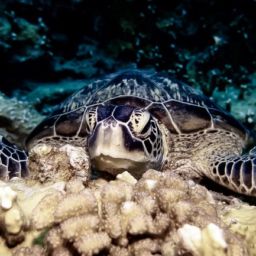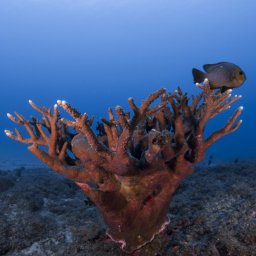We all know them as the stinging coral that causes an irritating rash whenever you touch them
Fire coral is not actually a coral!
They are in fact marine organisms that are more closely related to jellyfish and some forms of anemones.
They take on the shape, and characteristics of coral and so this is where the miss conception, and classification, of this species has derived from. This species is similar to a very hardy “soft” coral but the Millepora genus are not considered corals due to their internal structure. Like coral, they live in colonies and are made up of polyps that produce an ecoskeleton but inside this ‘tough exterior’ there are a series of canals that link up the polyps and allow distribution of food and energy which make them very brittle.
Like their name sake fire coral can take on many forms and be found in a range of colors. There are actually 13 different fire coral species each with unique indicators such as the net coral, the sea ginger, the box coral, and the blade coral. Due to our stronger currents the fire coral in our waters tend to be tube link with thicker low-lying cluster formation. Most have yellow, brown or tan coloration but can be tinted with green.
Fire coral have different types of polyps to actual corals. The smooth surface of the exoskeleton of the polyps are covered in pores, gastrpores, ampullae and dactylopores. The dactylopores house the long fine hairs and polyps that are used to sting its prey, the gastropores house gastrozooids (yup you’ve guessed is) which are tiny feeding polyps which digest these tasty morsels and deliver them, through the canals, to the rest of the community and the ampullae house the polyps which are used for reproduction. Fire corals feed mainly on zooplankton or phytoplankton by sifting the water with their tentacles, once the animal/plant is detected it is shot down by nematocysts (polyps that sting as a form or defense as well as to attack its prey) and are covered with mucus by the gastrozooids and are then delivered to the ‘mouth’ to begin digestion. (Shedd, 2011)
The genus Millepora actually translates to ‘thousand pores’ which pretty many sums up this fascinating creature.
Alongside their own feeding behavior they also have a symbiotic relationship with zooxanthellae. These algae live inside the tissues of the exoskeleton and produces energy, through photosynthesis, which feeds the fire polyps. The algae, in return, are provided with protection and access to sunlight.
They are most commonly found in shallow reefs to allow for optimal photosynthesis by their algae and also it is where there is a high variance in the water flow which brings with it the plankton that they rely on for food. This species can be found in many areas including the India, Pacific and Atlantic oceans as well as in the Red sea and Caribbean sea.
Another difference between fire coral and ‘true’ coral is in their reproductive behavior. The fire coral has been studied and found to have a far more complex reproductive cycle (in comparison to other reef-building corals). The polyps reproduce asexually using medusae or fragmentation. Medusae are jellyfish like creatures that are released into the water from the ampullae pores (which contain the reproductive organs). Fertilized eggs develop into free-swimming larvae, Planula, shaped a bit like a bean that move freely around the water column until it finds a suitable environment where it will eventually settle on the substrate. They grow back into a polyp and form a new colony.
Fire corals face the same threats that are currently impacting coral reefs globally
Ocean acidification, temperature rises, surface run off, leaching and pollutants entering our oceans are all major factors. Fishing is another major threat to fire corals. Being a habitat for some larger fish, it is often damaged or demolished in negative fishing techniques such as trawling and dynamite fishing. Over fishing has a knock on effect which has resulted in an increase in macro algae which out compete and smothers the fire coral.
With fire coral having a more fragile exoskeleton to other reef building corals it is also under threat from anchor damage and diving and snorkeling fin damage.
Fire corals are listed on Appendix II of the Convention on International Trade in Endangered Species (CITES).
What can we do
We can help by reducing or carbon footprint and encouraging others to reduce theirs.
Looking for more ecologically friendly alternatives in our everyday lives.
Campaigning larger companies to stop pollutants from entering our water ways.
Eating only sustainably caught fish and talking about these issues more to make others aware.
When it comes to diving we can choose tour operators who care for the environment when booking our trips. Also, be conscious of our direct impact. Making sure we practice our neutral buoyancy. Do not touch corals whilst diving and being aware of our fins whilst under and upon the water.
If you would like to talk further about any of these issues or if you would like a little helping hand with your buoyancy why not pop into the shop and have a look at the ‘coral identification’ module we offer, or talk to one of us about taking your ‘Perfect Buoyancy’ Specialty to improve your under water presence.











